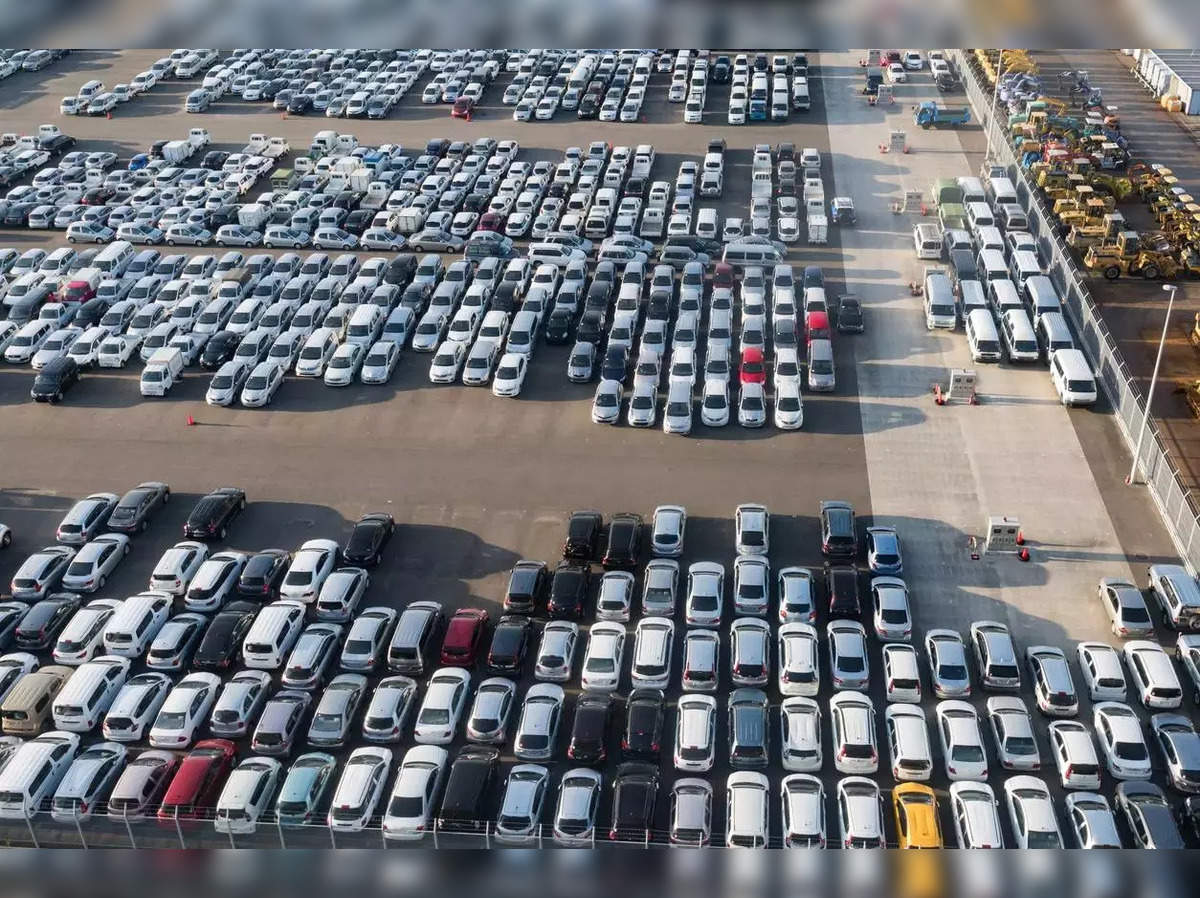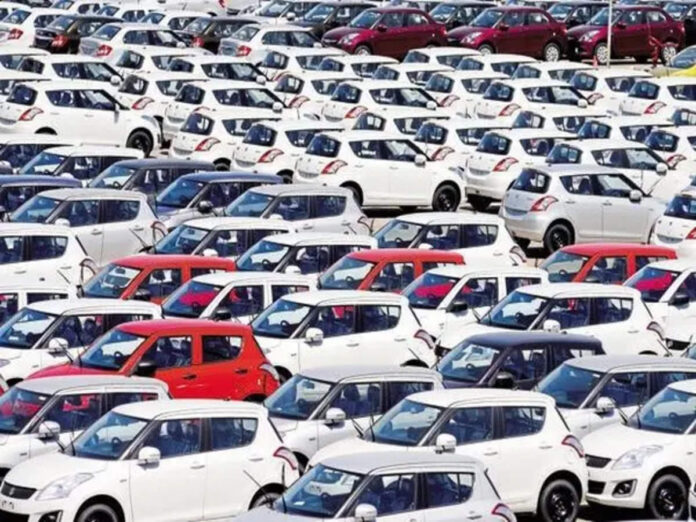As Diwali 2024 approached, hopes for an upswing in India’s car market remained strong, with automakers and dealers alike looking to capitalize on the festive season. Yet this year, rather than seeing a spike in demand, the market faced an unexpected slump.
Data from the Federation of Automobile Dealers Associations (FADA) reveals that this season’s car sales have declined significantly, leaving dealers with an all-time high inventory of 80-85 days, which equates to approximately 7.90 lakh unsold vehicles, collectively valued at around ₹79,000 crore. This inventory backlog signals an urgent need for reflection on industry strategies and the underlying issues that have led to this situation.
The Surprising Drop in Festive Sales and Growing Inventory Concerns
In the months leading up to Diwali, car sales in India traditionally experience a surge as consumers flock to showrooms to purchase vehicles, drawn by a combination of festive discounts and cultural incentives. However, 2024 has been an outlier, as sales have plummeted, resulting in dealers struggling to manage a surplus of unsold cars. With an estimated 7.90 lakh vehicles in stock—significantly higher than the norm—the situation has left car dealers holding inventory worth ₹79,000 crore.
As per FADA’s recent data, car sales fell by 18.81% compared to the previous year’s festive period. This drastic decrease can be traced back several months, as the slowdown began as early as May 2024. Automakers had optimistically dispatched high volumes of cars to dealerships in anticipation of a strong festive season, but low customer turnout in showrooms has since led to an accumulation of unsold units.

Interestingly, this slowdown is seen across various segments, including vehicles priced in the ₹10-25 lakh range—a category that had been one of the market’s primary growth drivers in recent years. This trend is particularly concerning for manufacturers who had banked on consistent sales from this mid-range segment post-pandemic.
Yet despite the overall slump, certain newer models such as the Maruti Suzuki Fronx and the recently launched Tata Curvv appear to have been less impacted by the slowdown, suggesting a shift in consumer preferences towards more innovative or distinct models.
Factors Contributing to the Sales Decline: Economic and Environmental Influences
The decline in car sales can be attributed to a complex combination of factors, including economic pressures, environmental conditions, and shifts in consumer behavior. Each of these has contributed to the situation now facing car dealerships across India:
1. Extreme Weather Patterns Affecting Consumer Sentiment
One of the most significant, albeit less conventional, factors influencing the market has been extreme weather. India has experienced a year marked by severe weather anomalies—a hotter-than-usual summer, followed by prolonged and intense monsoons. This series of unusual weather patterns has reportedly influenced purchasing decisions, with many consumers opting to delay major expenditures, including car purchases, due to uncertain economic and environmental conditions. For instance, FADA reports suggest that sales dips were especially notable in states hit hardest by these weather extremes, as customers in these regions seemed more cautious about large financial commitments.
2. Economic Uncertainties and Rising Interest Rates
Amid rising inflation, higher loan interest rates have also played a role in curbing consumer enthusiasm for new car purchases. Car financing costs have increased, creating additional hesitation among middle-class buyers, a group that constitutes a significant portion of the automobile market in India. With India’s repo rate standing at 6.5% as of October 2024, many banks have adjusted car loan interest rates upwards, making car financing a more expensive option for prospective buyers.
3. Preference Shifts Toward Newer Models and Market Saturation
Despite a general downturn, there remains strong demand for select new models, which shows that customers may be waiting for specific designs or tech innovations rather than settling for available options. Maruti Suzuki’s Fronx and Tata’s Curvv have enjoyed relatively stable sales, underscoring a shift in consumer interest towards fresh, technologically advanced models. This preference shift suggests a market saturation for more conventional models and poses challenges for dealers who are holding inventory that doesn’t meet the latest consumer demands.

The Implications of High Inventory Levels for Future Sales and Launches.
The current glut of unsold vehicles poses numerous risks and potential consequences for the auto industry in India.
1. Financial Strain on Dealers
An unsold inventory of 7.90 lakh vehicles, with a collective value of ₹79,000 crore, represents a significant financial burden for dealers. Maintaining such high stock levels requires considerable operational expenditure for storage, insurance, and interest on financing. The longer these cars remain unsold, the greater the financial strain on dealerships, potentially impacting their liquidity and overall financial health. Some smaller dealers may face an existential threat if they are unable to offload their current stock in a timely manner.
2. Potential Impact on Future Car Launches.
The high inventory levels also raise questions about the impact on upcoming car launches. In an already saturated market, new launches could face difficulties finding traction, especially if dealerships are preoccupied with clearing existing inventory. Manufacturers may be forced to delay or re-evaluate the timing of new launches to avoid further exacerbating the problem. For instance, if upcoming models fail to stand out with unique features or fail to address current consumer preferences, they risk becoming yet another addition to the growing inventory backlog.
3. Risk of Aggressive Discounting and Reduced Profit Margins.
As dealers strive to clear their stock, the industry could see a wave of aggressive discounting. While this may benefit consumers in the short term, it could potentially erode profit margins for both dealers and manufacturers, creating longer-term financial challenges. Moreover, significant discounting can dilute brand value and affect consumer perception, potentially making it harder to command premium prices for future models.
Outlook: A Potential Shift in the Indian Auto Market Landscape
Moving forward, manufacturers and dealers may need to adopt more cautious sales projections and inventory management practices. Recent events suggest that aggressive stockpiling without a clear understanding of market dynamics can lead to unintended financial consequences. FADA has recommended automakers adopt a more restrained approach to dispatching stock to dealerships, a step that may help balance inventory levels with actual demand more effectively.
In the face of changing consumer preferences, environmental factors, and economic pressures, the Indian auto market is at a critical juncture. To avoid future inventory pileups, automakers may need to recalibrate their strategies, potentially focusing on new, innovative models that align closely with consumer demands. Additionally, with EVs gradually gaining traction, dealerships may consider diversifying their inventories to accommodate changing market demands.
As the festive season comes to a close, the car industry in India will likely undergo significant introspection, considering both the lessons of this year and the growing importance of agile, demand-responsive strategies. Ultimately, how the industry navigates these challenges may well define the future of car sales in India.

